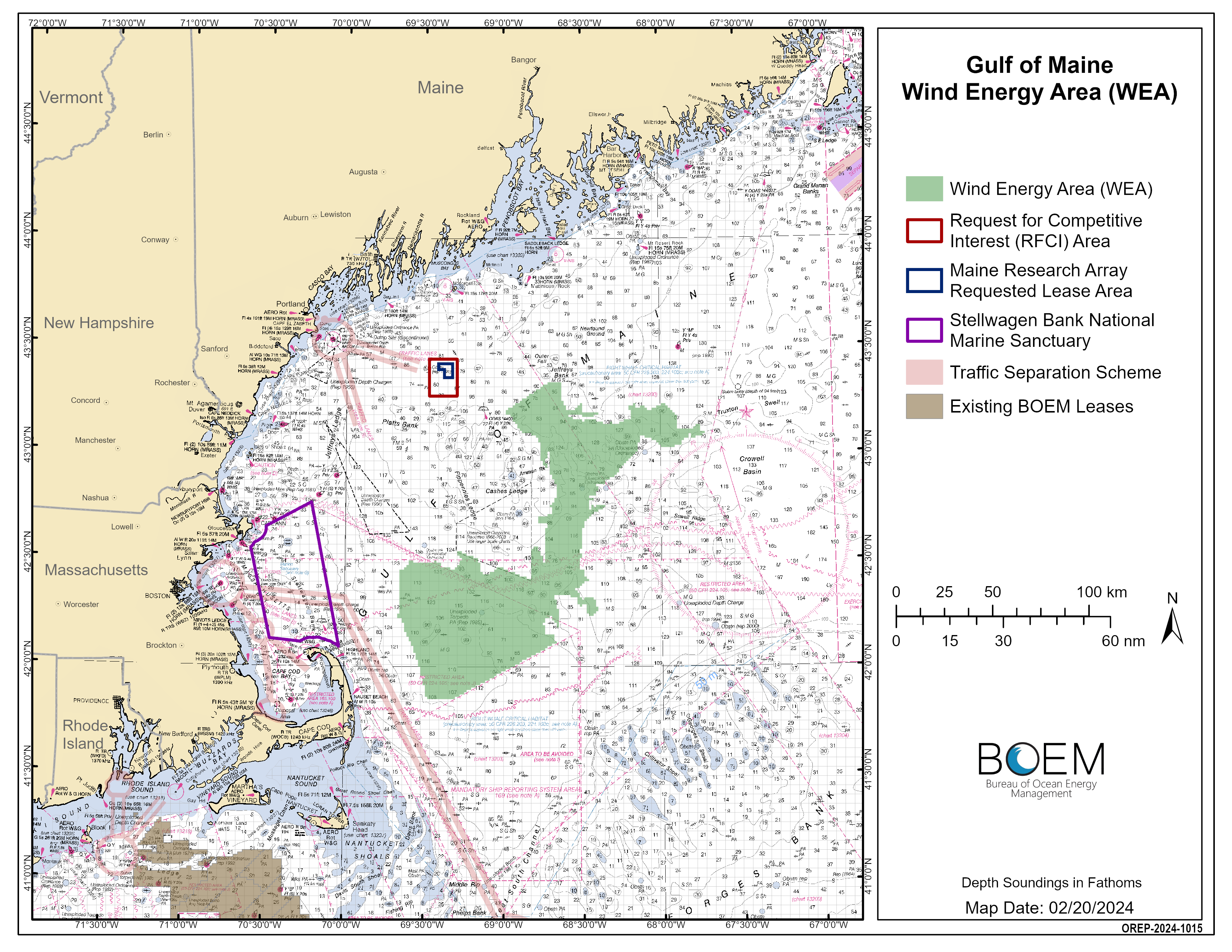The U.S. Department of the Interior has proposed the first offshore wind energy auction in the Gulf of Maine. The process has potential to advance the development of large-scale offshore wind projects in New England.
BOEM's Proposed Sale Notice for ATLW-11 appeared in the Federal Register on May 1, 2024. According to the Bureau of Ocean Energy Management, the proposed "Atlantic Wind Lease Sale 11 (ATLW-11)" would cover about one million acres of the Outer Continental Shelf offshore Maine, Massachusetts, and New Hampshire. BOEM plans to divide this zone into eight lease areas, which it says could collectively support about 15 gigawatts of offshore wind generation.
BOEM selected these areas for leasing through a process that included a 2022 Request for Information (considering public comments and impacts to resources regarding a broader 13.7-million-acre area), a 2023 Call for Information and Nominations, the 2024 identification of a Wind Energy Area (WEA) in the Gulf of Maine, and environmental reviews.
BOEM says that in identifying the ATLW-11 areas for leasing, it "prioritized avoidance of offshore fishing grounds and identification of vessel transit routes, while retaining sufficient acreage to support the region’s offshore wind energy goals (13-18 GW based on information from Massachusetts, Maine, and ISO-New England)." For example, in response to requests from members of the fishing community, BOEM created three corridors between leases in the southern region of the Final WEA to facilitate existing and future transit through proposed lease areas.
According to BOEM, it has notified the following entities that their qualification is pending or that they are qualified to participate in any Gulf of Maine auction:
- Avangrid Renewables, LLC
- Equinor Wind US LLC
- US Mainstream Renewable Power Inc
- Diamond Wind North America, LLC
- Hexicon USA, LLC
- TotalEnergies SBE US, LLC
- Pine Tree Offshore Wind, LLC
- OW Gulf of Maine LLC
- Repsol Renewables North America, Inc
- Maine Offshore Wind Development LLC
- Corio USA Projectco LLC
Any other entity wishing to participate in any Gulf of Maine auction must submit the required qualification materials to BOEM by July 1, 2024.







